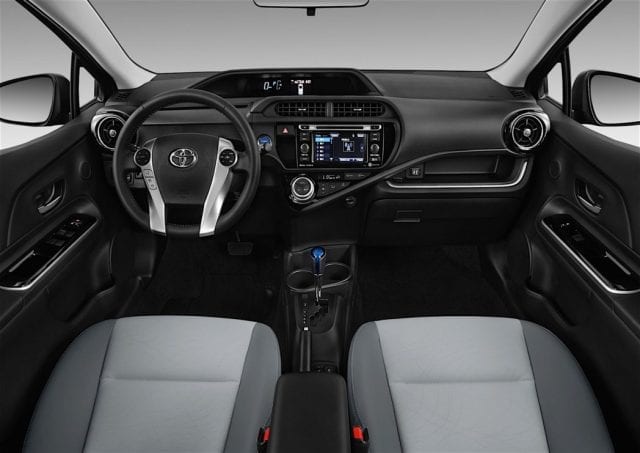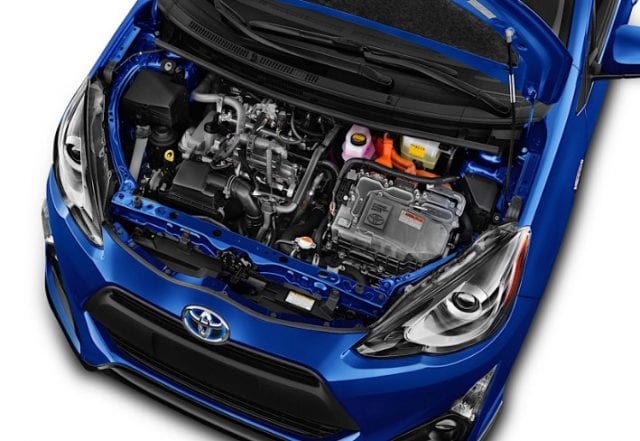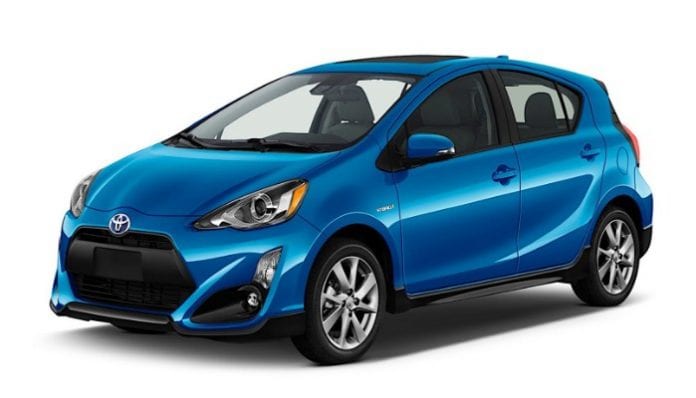After some time has passed, the smallest one of the Toyota’s hybrid vehicle family on the US soil, the Prius C, is finally getting a much-needed facelift for the 2017 model year. It was introduced stateside back in 2012, and since then it only received a minor nip and tuck here and there, and that is with the last year’s Persona series models.
Exterior Design

The refreshed 2017 Toyota Prius C received a stunning and far hotter appearance, and that is with the current model’s hexagonal grille, but also with the addition of black trim in the fascia around the fog lights. What further adds to the aggressive style of the refreshed Prius C are the matching side sills with similarly dark pieces for the rear spoiler and lower portion of the bumper at the back of the vehicle. There is one more thing changed, and that is the fact that Toyota now offers aluminum wheels as standard for all models, unlike before when they were standard on top trims only.
2017 Toyota Prius C Interior

These were the changes on the outside, let’s shift our focus to the inside of it. Thanks to this refresh, 2017 Toyota Prius C will receive companies Safety Sense-C safety suite as standard on all trim levels. This is a piece of tech that includes pre-collision braking which works at up to 85 MPH (137 KM/H), and is capable of slowing the little hatchback by 19 MPH (31 KM/H) before a crash, but before this you will get an audio signal when you need to step on the brake. Lane departure system is included, and it also will release an audio sound when you drift off the road or start crossing to a direct path with oncoming traffic. Then there is another nifty little thing, and that is the automatic high beams that check for oncoming traffic at night and switch to low beams when appropriate.
Engine

Unfortunately, the refresh of the 2017 Toyota Prius C didn’t imply the changes to its powertrain. You will still have to deal with the same 1.5 I4 unit that runs on the Atkinson cycle and offers the same 73 HP (54 kilowatts) and 82 lb-ft (111 Newton-meters) of torque by itself. But it is not by alone in this setup, is it? It has the help of electric motor which increases the total output to, still not that impressive, 99 HP (74 kW). The fuel consumption numbers of this little hatchback are off the hook with 48/43/46 MPG city/highway/combined respectively, and the fully electric autonomy of the vehicle is around a mile at speed up to 25 MPH (40 KM/H).









